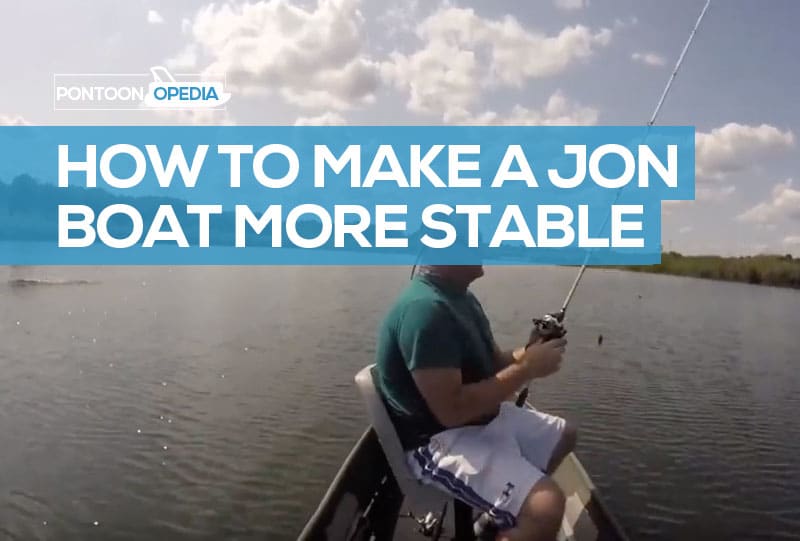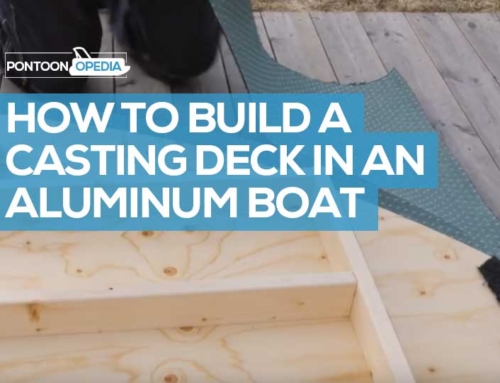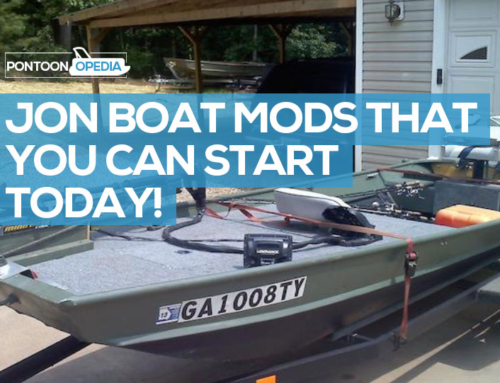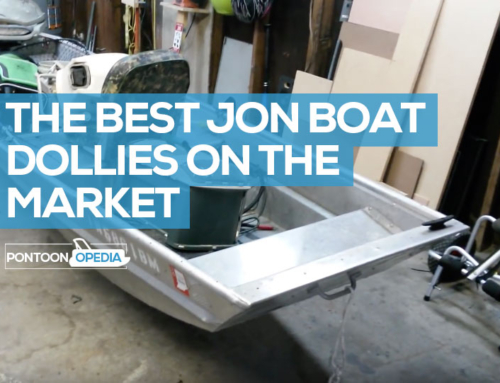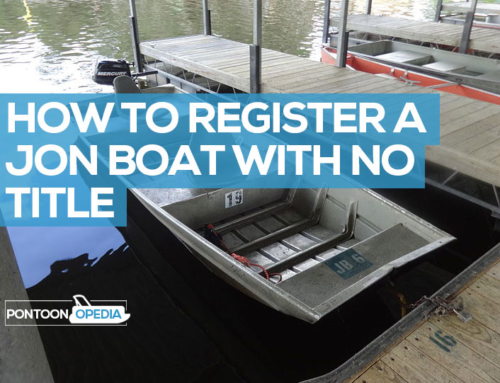Jon boats are great for fishing and leisurely trips in shallow waters and calm lakes. But if you throw a few larger boats into the mix, a few wakes here and there, and standing up to fish with all your heavy accessories on-board, stability can become an issue.
I own a Jon boat, but I’ve never had any stability issues. But I do tend to use it in very calm smaller waters. However, I do understand it can be an issue, so looked online for some solution on how to make a Jon boat more stable.
Below you can find all the hints and tips that I picked up from reading forums and watching a few YouTube videos – I hope it helps!
Table of Contents
How to make a small Jon boat more stable
The best tip I found for improving Jon boat stability is to get your centre of gravity lower down into the boat. You could do that by sitting on your hindquarters when fishing, but let’s face it, that will get very uncomfortable after a while.
There is a more practical solution though.
One way in which you can improve the stability is with a few simple modifications. Take a look at this real-life project below.
Watch a real-life example project
If you watch the video below, you will see how the guy took out his casting deck and put a floor in, meaning he could then put himself lower into the boat. By getting his center of gravity lower, he managed to get some more stability in his Jon boat.
This is what he had to say:
“With an actual floor installed I’ll be standing and making my casts from a lower position in the boat which should help make this boat more stable and more comfortable to fish in. Standing and making casts from the casting deck I built last year was pretty shaky. I don’t expect a huge difference but if I lose my balance out on the water hopefully it’ll be a little easier to stay in the boat and not go for a swim.”
The project results
It’s way more stable, with not a drop of water coming into the boat.
Additional stability tips
I also found this great answer on a boating forum:
“If you want to keep the existing floor, put heavy items under the floor to make it more stable. High density dead weight would be the most efficient way to lower the center of gravity with your floor in place, the lower the better. Enlarging the keel might also add some dampening to the motion that will make it feel a bit more comfortable, but the static stablity will not be affected much unless it was made from lead or steel.”
“Try to do your improvements for a level under your current center of gravity since the aim is taking this point lower to make the boat more stable. I don’t know what others think about this but putting some lead nuggets might be the easiest way.”
“I would vote (1) wait for a wider boat, (2) add outriggers if you get the narrow one. You don’t want to see all of your gear going to the bottom if the boat tips over. Good luck with whatever you get.”
How stable are Jon boats?
It depends on the Jon boat you have, and by that I am referring to the surface area that is has underneath on the flat-bottom. The more surface area you have connecting with the water, the more stable it should be in theory.
Another factor relates to how many modifications you have made. Many people will add live wells, better seating, and other heavier accessories which can add to the weight, and lead to stability issues.
If you are also then loading the Jon boat up with more passengers, you might find the stability (or lack of) comes into question.
What type of Jon boat will be the most stable?
I like to take my two kids fishing with me, and for that I wouldn’t go anything smaller than a 14-foot Jon boat. And mine is what’s called a semi-v which extends to the transom. This offers more stability, and if you read on you could find out more about v-shaped versus flat-bottomed boats and how their stability differs.
Aluminum welded hulls also seem to be more stable too. It offers a way better boat construction which can take a heavier engine.
So, to conclude, let’s say you have 3 people in the boat, I would not go any smaller than a 14-foot Jon boat, but a wide one. Say with a 48-inch floor and 72-inch beam (that’s the widest point). That will be stable if you’re fishing on calm and shallow waters.
This is what I recommend:
- At least 14 foot in length
- Wide with a 48-inch floor and 72-inch beam
- Aluminum construction
- High walls to give more stability
Will a v-shaped hull boat be more stable?
They are both stable boats, but your choice here is dependent on the type of water you will be boating or fishing in.
If it’s just smaller lakes where you don’t have any larger vessels out there, then Jon boats will be fine. You just need a 12-volt hand-operated electric motor powered by a deep cycle battery. Alternatively, you can use a small gas motor.
However, if you are going to out on larger lakes where you have bigger boats that can leave wakes and waves, you might find the stability of a Jon boat problematic.
In these cases, I would recommend a v-shaped hull boat as they can cut through waves, rather than just sitting on top of the water. V-shaped boats also have higher walls which can help keep you in boat a little better. The higher the sides of your boat, the more reserve stability the vessel has. You can also use a higher-powered motor.
The last word…
I’ve been fishing from my Jon boat for a couple of years now, and I did struggle at first to get the right balance of stability.
But what I did find, and firmly believe, is that if you fish from your Jon boat long enough, you will become accustomed to its stability, including any of the little quirks and adjustments you will need to make.
Want to accessorize your Jon boat? To see which accessories I recommend that you simply must-have, click here.
One common thread I have seen on the Internet is people wanting to add platforms to their Jon boat, believing that it will make it more stable.
It’s not the case, as the higher up your position your own weight, the less stability you will have.

